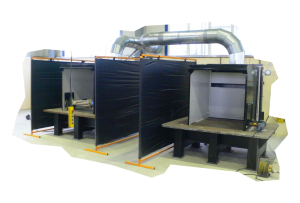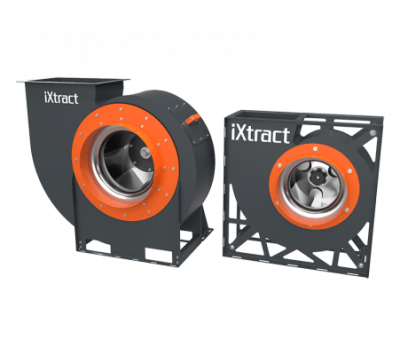When most people picture the automotive industry, they tend to think of vast factories run by global giants. But in reality, the industry stretches far beyond the production line. It plays a crucial role in local economies, from independent garages in small towns to busy service centres in major cities.
Garages and workshops employ thousands of skilled workers, including mechanics, diagnostic technicians, and MOT testers. Body shops rely on panel beaters, spray painters, and structural repair specialists to keep vehicles roadworthy and presentable. Meanwhile, manufacturing plants involved in engine assembly, parts production, and full vehicle builds offer high-volume employment in skilled roles. Many of these roles don’t require a university degree, yet still provide long-term career opportunities and job stability.
The Invisible Dangers
However, these very same spaces, so crucial to the economy, also present risks. While most people associate cars with road safety threats, one of the most serious and less visible dangers comes from what we breathe. Gases and airborne particles released across the automotive sector pose significant health hazards.
1. Exhaust Emissions
Internal combustion engines emit a mix of harmful pollutants, particularly in older or poorly maintained vehicles. Nitrogen dioxide (NO₂) is one of the most common, known to irritate the airways and worsen respiratory conditions such as asthma and bronchitis.
Carbon monoxide (CO), even in small amounts, interferes with the body’s ability to transport oxygen, leading to symptoms like dizziness and fatigue. In high concentrations, it can be fatal.
Then there are particulate matter (PM10 and PM2.5), tiny soot-like particles that can travel deep into the lungs and even enter the bloodstream. Long-term exposure to these particles has been linked to heart disease, lung cancer, and stroke.
2. Tyre and Brake Dust
Tyre wear releases tiny fragments of synthetic rubber and microplastics, which become suspended in the air or wash into nearby waterways.
At the same time, brake pads shed fine metal dust (often containing copper, iron, and antimony), which becomes airborne during deceleration and adds to the invisible pollution present in busy workshops and roadsides.
3. Paint Fumes and Solvents
Exposure to paints, lacquers, and thinners is very common in body shops and spray booths. These substances often contain solvents such as toluene, xylene, and acetone, which are known to cause headaches, dizziness, and, with prolonged exposure, long-term damage to the liver, kidneys, and nervous system.
Some clear coats and hardeners also contain isocyanates, which are particularly hazardous and can trigger severe asthma attacks, even in workers with no prior history of respiratory issues.
4. Manufacturing Plant Emissions
Automotive manufacturing relies on a variety of industrial processes such as welding, machining, and casting, all of which can release airborne contaminants into the workplace.
Welding fumes may contain metals such as manganese, chromium, and nickel, which are known to pose respiratory health risks.
Machining operations often generate oil mists and cutting fluids that can affect both air quality and skin health.
Meanwhile, tasks like sanding, grinding, and polishing, particularly during engine or component production, produce fine dust particles that can linger in the air and gradually impact worker well-being.
How to Protect Workers in These Environments
The best way to protect workers in the automotive industry against these threats is by using Local Exhaust Ventilation (LEV).
LEVs are designed to capture and remove harmful airborne substances at their source before they can be inhaled by workers. Rather than letting fumes, dust, vapours, or smoke float into the air, LEV systems suck them away immediately through hoods, ducts, filters, and fans.
A typical LEV system includes:
- A hood or extraction arm: positioned close to the work process to collect contaminants.
- Ducting: to carry the air away.
- Filters or scrubbers: to remove harmful particles or gases.
- A fan: to pull the contaminated air through the system.
- An exhaust outlet: where the cleaned or filtered air is safely discharged (usually outside).
Here are some of the most effective LEV solutions tailored specifically to automotive environments:
1. Welding Fume Extraction Systems
Welding fumes are a well-known health hazard, containing fine metal particles and toxic gases. Whether you’re working with MIG (Metal Inert Gas), TIG (Tungsten Inert Gas), or arc welding, a dedicated welding extraction system is essential.
These systems typically include extraction arms or hoods placed directly over the work area, with powerful filtration to remove airborne contaminants before they spread.
2. Flexible Extraction Arms
Ideal for garages, fabrication shops, and repair bays, extraction arms offer a practical, versatile way to control dust, fumes, and vapours at source. They can be easily positioned over sanding tables, grinding tools, or welding stations, ensuring airborne risks are dealt with immediately. Available in various lengths, diameters, and mounting options, they’re a popular choice for workshops that need flexibility.
For workshops that need broader reach and overhead clearance, articulating boom arms are an alternative. These ceiling- or wall-mounted systems allow for smooth, multi-directional movement across large work areas, making them ideal for servicing multiple bays or moving around obstacles. Often paired with extraction hoses or tools, they help maintain a clutter-free floor while ensuring fumes and particles are captured exactly where needed.
3. Vehicle Exhaust Extraction
Running engines indoors can quickly lead to dangerous levels of carbon monoxide and nitrogen dioxide. Exhaust extraction systems solve this by connecting directly to the vehicle’s tailpipe, safely venting emissions outside the building.
Options include wall-mounted, sliding rail, and hose reel systems, perfect for MOT stations, diagnostic bays, and main dealerships.
For garages that don’t have a fixed system or need flexibility across different bays, portable exhaust extraction units should be used. These mobile systems can be wheeled into position and attached to the exhaust pipe, capturing harmful fumes on the spot.
They’re ideal for smaller workshops, mobile mechanics, or as a backup when fixed systems are at capacity.
4. Spray Booth Extraction
Paint fumes and overspray pose a serious threat to health, especially when working with isocyanate-based paints. A well-designed spray booth extraction system ensures that harmful vapours are pulled away from the operator and through a series of filters before being released.
5. Industrial Extraction Hoses and Reels
Durable and chemically resistant, LEV hoses and hose reels play a crucial role in the success of any extraction system. Used to transport fumes, dust, and gases safely through the system, they must withstand heat, abrasion, and vibration.
Is Your Automotive Business Safe, Compliant and Fully Protected?
Are you confident your LEV systems are doing their job? Are they compliant with HSE and COSHH regulations?
If the answer is no, or even ‘not sure’, it’s time to take a closer look.
At Auto Extract Systems, we specialise in helping automotive businesses identify risks and implement the right ventilation solutions for their specific environment.
No two sites are the same, which is why we offer bespoke, fully engineered LEV systems tailored to your processes, layout, and compliance needs.
Get in touch with Auto Extract Systems today and find out exactly what’s needed to keep your team safe, your business compliant, and your air clean.







































